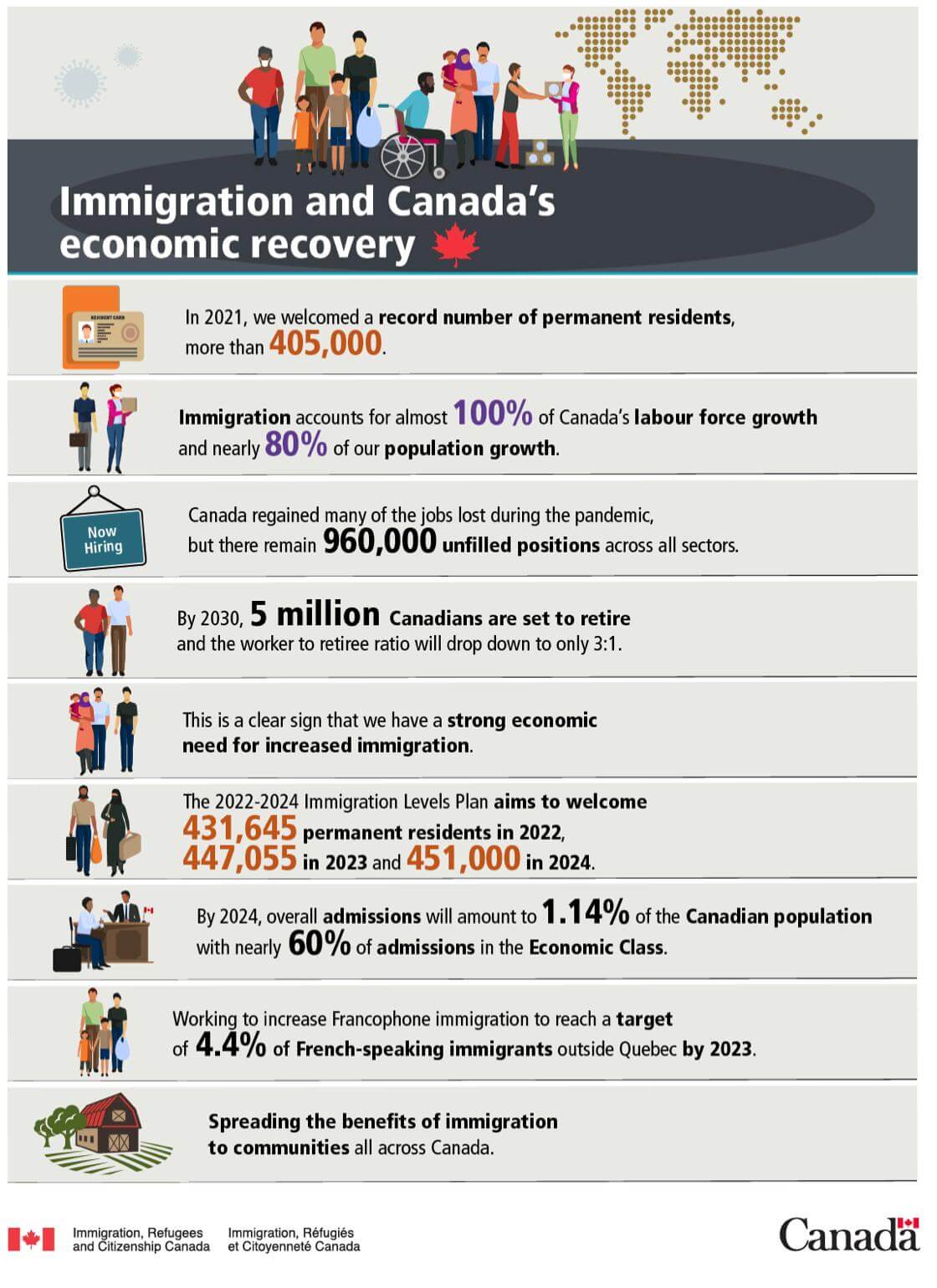
The Provincial Nominee Program has changed Canadian immigration
Canada’s immigration landscape has been largely transformed by the Provincial Nominee Program (PNP), according to a new Statistics Canada study.
Discover if You Are Eligible for Canadian Immigration
The PNP was introduced in all provinces, except for Quebec and the Yukon, between 1998 and 2009. Its purpose was to spread the settlement of economic immigrants outside major Canadian cities and to address the labour force needs of each province and territory.
Each province and territory is responsible for the design and management of its PNP. There are several different streams to which applicants can apply. While the streams vary significantly between the provinces and territories, there are a few main types, including workers with job offers, workers without job offers, entrepreneur streams and international student streams.
The PNP has been continuously expanding, resulting in 68,000 provincial nominees in Canada in 2019. That year, the PNP was the largest selection program for economic immigrants, accounting for 35% of all new immigrants in Canada, up from 1% in 2000.
Each year, Immigration, Refugees and Citizenship Canada (IRCC) releases a new Immigrations Level Plan which it uses to guide its operations. In 2023, Canada aims to welcome 465,000 new permanent residents, and this number is increased to 500,000 in 2025. The Immigration Levels Plan target for permanent residents under PNP exceeds Express Entry, which is the federal government’s main economic class pathway. In 2025, IRCC aims to welcome 117,500 permanent residents through the PNP.
The distribution of economic immigrants across Canada
The main finding of the Statistics Canada study was that a decentralization of economic immigrations occurred simultaneously with growth in the PNP – as the PNPs grew, economic immigration became less centralized in Canada. The provincial distribution of new economic immigrants shifted significantly from 2000, when there were virtually no provincial nominees, to 2019.
In particular, the share of immigrants intending to settle in Ontario (mainly Toronto), declined from 61% to 42% in that time period. The share headed to British Columbia also saw a small decline, from 17% to 15%.
The Prairie provinces gained substantially, the share of immigrants going to both Manitoba and Saskatchewan grew from virtually zero to around 7%. Alberta experienced an increase share along with the Atlantic provinces, with their collective share rising from 1% to 7%.
The changing characteristics of provincial nominees
As the PNP has evolved, the characteristics of those selected through the program has changed substantially.
The most consequential change was the increased tendency to choose economic immigrants that had Canadian earnings prior to landing, essentially meaning temporary foreign workers. The proportion of provincial nominees aged 20 to 54 who were previously temporary foreign workers rose from 6% in 2002 to 61% in 2019 and further to 72% in 2021.
Research showed that immigrants who were previously temporary foreign works had better labour market outcomes, both in the short and long run, compared with immigrants without prior Canadian work experience.
There was also a large increase in the number of PNP immigrants with pre-immigration Canadian study experience. In 2019, 38% of new PNP immigrants had pre-immigration Canadian study experience, up from 7% in 2010.
Another important characteristic was age. Age at immigration has declined among provincial nominees in the past. The share aged 20 to 29 at immigration increased from 24% in 2005 to 38% in 2019. According to the study, younger immigrants tend to have better economic outcomes than their older counterparts, particularly in the long run.
As the share of nominees in their 20s increase, the share who were principal applicants without spouses and dependents also increased.
Official language ability among provincial nominees has undergone major changes. In 2005, one fifth of nominees spoke neither English nor French. In 2019, the number of nominees not speaking English or French upon arrival in Canada has fallen to virtually zero, probably due to the fact that most PNP programs currently require nominees to speak English or French at some specified level.
The proportion with a mother tongue other than English or French but who also speak English or French increased from 64% to 91% from 2005 to 2019.
Finally, the source countries of economic immigrants have seen a change. Traditionally, economic immigrants came to Canada from a wide range of source countries with no single country or region dominating, but this is shifting. In 2019, 70% of new provincial nominees originated from three regions in Asia: Southern Asia, Eastern Asia and Southeast Asia.
Looking forward
Since the inception of the PNP, a substantial decentralization of new economic immigrants has been achieved. The characteristics of new provincial nominees has changed significantly as well, largely in a way that would tend to improve economic outcomes.
Continued growth of the PNP has the potential to continue fuelling the trend of greater regional decentralization of immigration, which is intended to better respond to the demographic and labour market challenges experienced in different regions of Canada.
As the study demonstrates, the numbers, settlement patterns and characteristics of provincial nominees change over time and affect their labour and demographic roles.
Source: https://www.cicnews.com/
Image Source: https://www.pexels.com/




